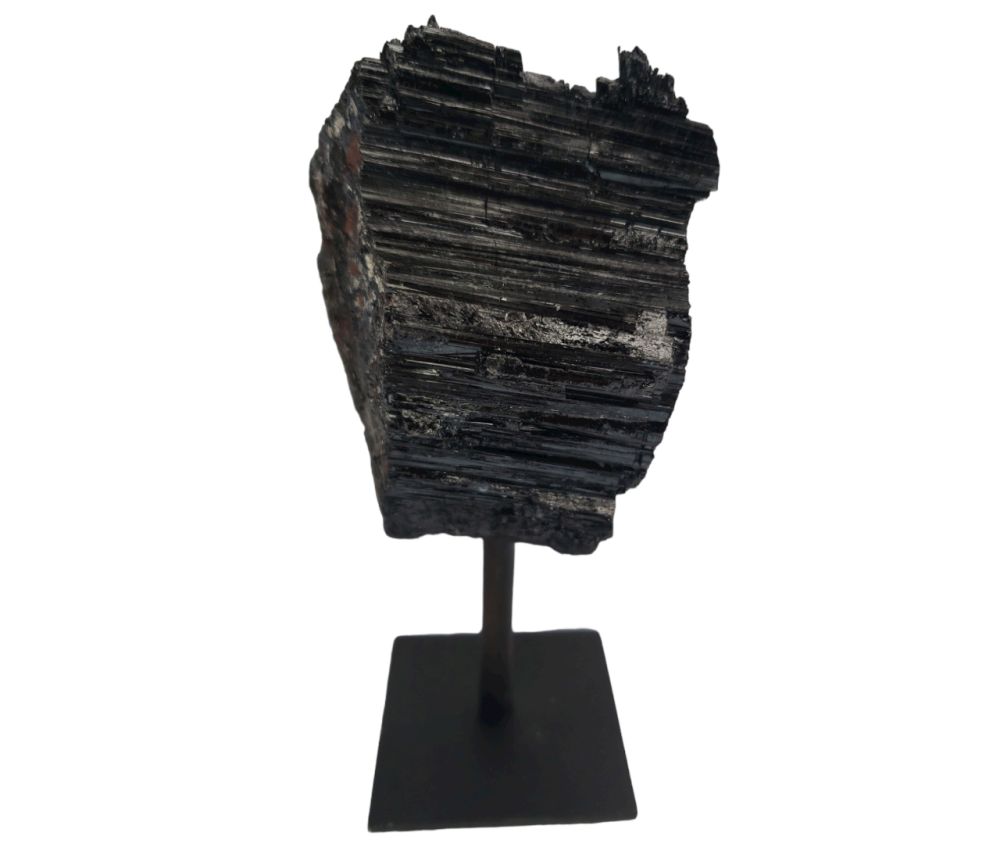We use cookies to make your experience better.
TimmersGems has a new website, existing customers also need to register again.
Black Tourmaline from the “Rockshop” fistsize series on black stand.
In addition to the small pieces, we now also have the 6 most popular stones on pin in a larger version! Packed per 3 pieces and available in Amethyst, Black Tourmaline, Sodalite, Kyanite, Rock Crystal and Green Aventurine
SKU
11944
Tourmaline (quartz) is a group of minerals, all cyclosilicates. The minerals in this group share a characteristic chemical formula: AX3Y6(BO3)3 Si6O18(O, OH, F)4. The A may contain calcium or sodium. The X can be aluminum, iron, lithium or magnesium. The Y is normally aluminum, but can also be chrome or iron. At the position of A there can be some potassium, manganese can be found in X and vanadium can be found in Y, but these elements are not often found in the formulas of the tourmaline group. Tourmaline occurs in pegmatites, metamorphites, magmatites and alluvial deposits. Although tourmaline was already known in the Mediterranean region in ancient times, it was not introduced into Western Europe from Sri Lanka by the Dutch until 1703. They named the new gem with a Sinhalese word "Turmali", which means "stone of mixed colors". Rubellites were traditionally used as gemstones - they were used by artists as talisman, because they would increase the creative power of artists. Tourmalines have certain unique properties. They are piezoelectric, meaning that when a crystal is heated or compressed, different electrical charges are formed at both ends of the crystal. This creates an electric potential. When an external electrical potential is applied to the crystal, it vibrates. The minerals are pleochroic, meaning the crystal is darker in color when viewed along the longest axis of the crystal than when viewed perpendicular to that axis. The four best-known and most common tourmaline minerals have different colors and transparencies. Elbaite is transparent and a valuable gemstone. Rich in iron, Schorl is the most abundant mineral in the tourmaline group and is black and opaque. It is mainly formed in pegmatites, the extremely slow cooling gangues of a magma. The two other tourmalines that occur regularly are dravite and uvite. Dravite is usually brown translucent and can grow very large. Uvite is green translucent to opaque. Tourmaline occurs in the sand fraction of Dutch Quaternary river sediments. It is, among other things, a characteristic component of Maaszanden. In the heavy mineral analysis that was carried out in the Netherlands at the National Geological Survey during the second half of the twentieth century, the mineral is classified in the so-called stable group.
| Dimensions | Divers |
|---|---|
| Country of Manufacture | Brazil |












